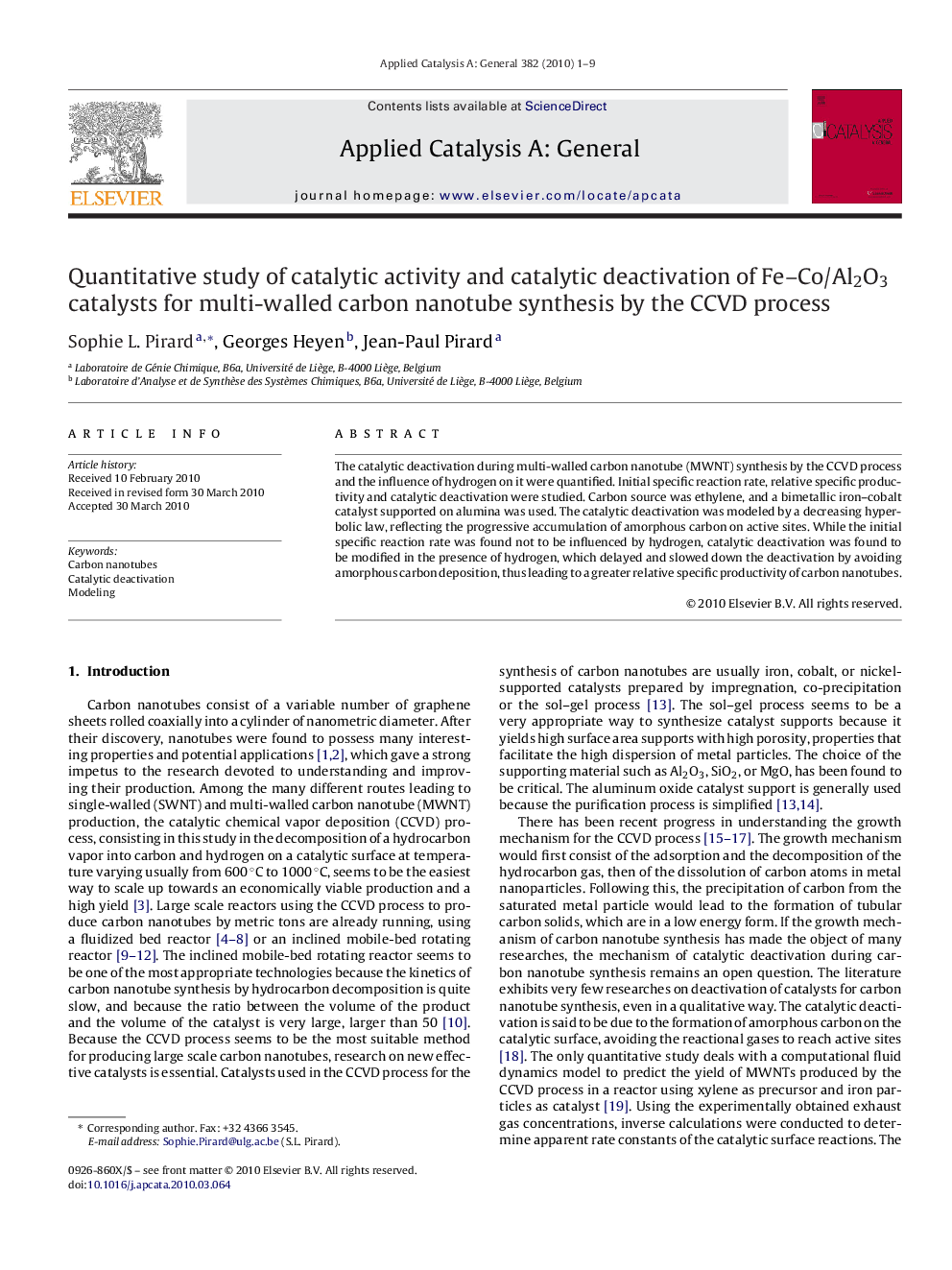| Article ID | Journal | Published Year | Pages | File Type |
|---|---|---|---|---|
| 42057 | Applied Catalysis A: General | 2010 | 9 Pages |
The catalytic deactivation during multi-walled carbon nanotube (MWNT) synthesis by the CCVD process and the influence of hydrogen on it were quantified. Initial specific reaction rate, relative specific productivity and catalytic deactivation were studied. Carbon source was ethylene, and a bimetallic iron–cobalt catalyst supported on alumina was used. The catalytic deactivation was modeled by a decreasing hyperbolic law, reflecting the progressive accumulation of amorphous carbon on active sites. While the initial specific reaction rate was found not to be influenced by hydrogen, catalytic deactivation was found to be modified in the presence of hydrogen, which delayed and slowed down the deactivation by avoiding amorphous carbon deposition, thus leading to a greater relative specific productivity of carbon nanotubes.
Graphical abstractThe catalytic deactivation during MWNT synthesis by the CCVD process was quantified. The catalytic deactivation was modeled by a decreasing hyperbolic law, reflecting the progressive accumulation of amorphous carbon on active sites. The catalytic deactivation was found to be modified with hydrogen, which delayed and slowed down the deactivation by avoiding amorphous carbon deposition.Figure optionsDownload full-size imageDownload high-quality image (63 K)Download as PowerPoint slide
